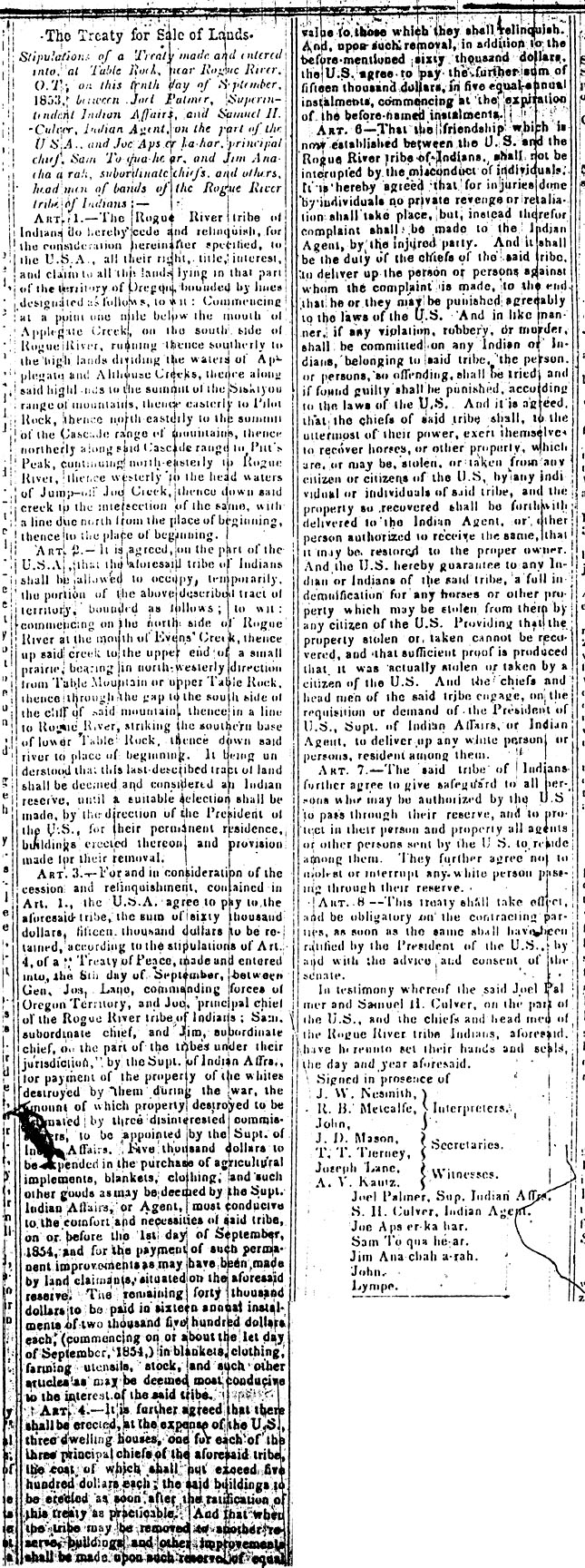The Table Rock Treaty was negotiated between the United States and several groups of Rogue River Indians in September 1853. Gold had been discovered just three years earlier, attracting thousands of miners and settlers to the region. This massive influx of newcomers resulted in some of the most violent conflicts in Oregon history, which were stemmed only temporarily by the 1853 treaty.
Some of the whites, dubbed “exterminators,” advocated the complete eradication of the Indians. In August 1853 the Yreka Herald suggested that whites wage “a war of extermination until the last red skin of these tribes has been killed.” Such sentiments were widespread in Oregon and northern California.
The Indians of the Rogue River Valley put up a fierce resistance, but the whites had superior numbers and the backing of the federal and state governments. In the summer of 1853, the leaders of several Indian groups called for peace, appealing to former governor Joseph Lane, commander of U.S. forces, to negotiate a peace treaty.
The chiefs agreed to give up most of their lands, roughly two thousand square miles, in exchange for a 100-square mile reservation and $60,000, a quarter of which would be used to pay for the war waged against them. The remainder of the settlement would come in the form of clothing, blankets, livestock, and agricultural equipment.
The peace established by the Table Rock Treaty did not last long. The wars between whites and Indians in southwestern Oregon would not end until 1856. That year, the Rogue River Indians were forced to give up their lands, including the newly created Table Rock Reservation, in exchange for a new reservation far to the north. By the end of the year, more than two thousand Rogue River Indians had been forcibly relocated to the Coast Reservation, which later became the Siletz Reservation.
Written by Cain Allen, © Oregon Historical Society, 2003.
